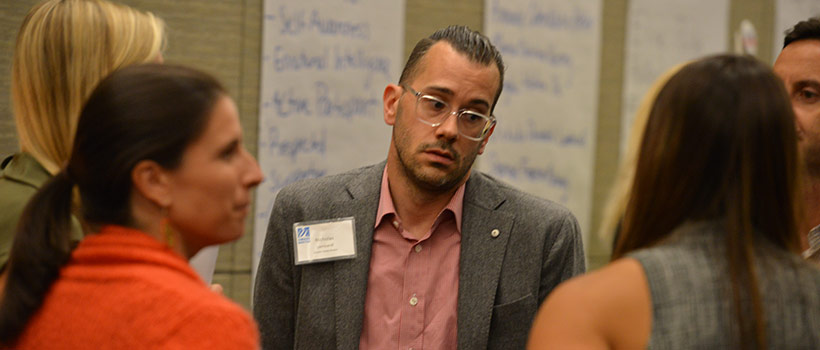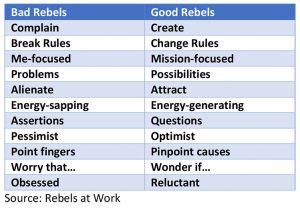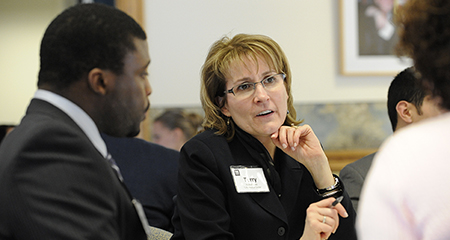
The University of Massachusetts Boston is in the midst of our annual performance review process. It’s always interesting to me to hear the grumblings of managers and the trepidation of employees surrounding this process. Managers, let me start by saying that I understand your frustration with the process, particularly when the forms are cumbersome and you have multiple employees to evaluate. That said, I hope you’ll agree with me that our ability as managers to be effective is enabled by the effectiveness of those we manage.
Having managed many employees in my lifetime, and partnered with leaders with broad spans of control, I’ve developed a few practices that improve the caliber of the performance discussion.
Nothing in the review should be a surprise
Good managers give both positive and constructive feedback in a timely manner. They set clear expectations and offer specific feedback as to how the employee has exceeded or missed the expectation. So, theoretically, the performance review is simply a way to formalize and summarize the feedback you’ve been giving all along.
Keep notes throughout the year
A well-written review will offer specific examples of an employee’s performance throughout the year – versus just those things that are top of mind because they just happened (or were most egregious). I conduct regular one-on-one meetings with my direct reports for which they are responsible for creating a written agenda. During these meetings, they can share what their priorities are, what decisions they need from me, what obstacles they are facing, etc. It’s easy for me to jot notes directly on the agenda and save it in a file under that employee’s name. I do the same with pertinent email strings, feedback I get from others, etc. It then becomes a simple task to review the contents of the folder and draft the appraisal.
Many employees fear performance reviews – even the superstars
There is something about the formality of the review process that can unnerve even the best performers. It’s as though they revert back to the days of their grade school report cards worrying about the grade they’ve gotten.
My practice is to share the written review with the employee ahead of the performance discussion, letting them know that it is a draft that can be revised as an outcome of the conversation. In this way, they have time to read and process what has been written, and the meeting becomes a dialogue where you can highlight those points from the review that you want to reinforce; and, they can share examples that you may have missed (or not been aware of) and ask clarifying questions about expectations. This meeting also sets the stage for the year ahead. A good discussion about the employee’s future aspirations and the needs of the business can uncover opportunities. These opportunities may lie within their role, in the department, elsewhere in the organization, or, perhaps, outside the company altogether. Regardless of the path, you are both working toward the same outcome.
Good leaders leverage potential
I know I’ve used this analogy many times before but very rarely does a sports team draft for a utility player. They want the positional player who is talented and passionate about what they can contribute to the team. And, it is important to note, the manager/coach know the skills and talents that already exist on the team and those that are needed.
Additionally, with rare exception, the manager/coach doesn’t then tell the drafted player that they need to become proficient at another aspect of the game. The point I am trying to make here is that we should be identifying and exploiting the unique skills and talents that the employee brings to the job – the reason we hired them in the first place.
I am by no means suggesting that we should not hold people accountable for their performance. Instead, what I am saying is that if you hired the elite hockey goalie and you now want her to play center, it’s unlikely she’ll maintain an elite status at that new position.
As a leader, how do you partner with your employee to discover and nurture their passions and strengths?




 The following is a guest post by
The following is a guest post by 



